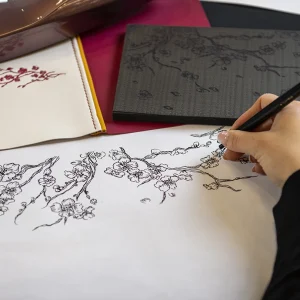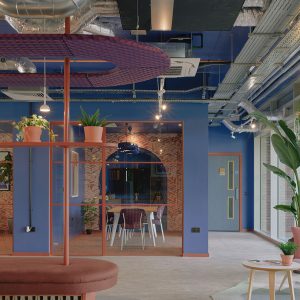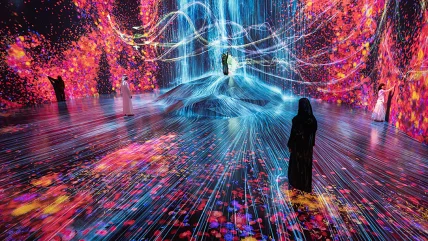
THERE HAS been a sudden rash of venues around the world offering ‘immersive’ artistic experiences using techniques such as 360° projection and projection mapping. While they appear to be serving up something spectacular, mind-bending and mindful (from limited experience, bean bags and deck chairs seem de rigueur in the immersive bit), it’s fair to say that critical appraisal has often been tepid if not downright sceptical.
Peter Conrad, writing in The Guardian, was relatively benign: ‘The immersion promised by an array of art exhibitions throughout London is also a harmless metaphor: at worst, you are inundated by light.’
Dead artists from Munch to Monet and Khalo to Klimt have been subjected to the 3D light and colour projection treatment. Conrad visited Frameless at Marble Arch, which parcels up a whole raft of artists under different themes in its four galleries.
‘A million lumens bombard you with more than 479 million pixels, while 158 speakers saturate you with music; the effect is a soft psychedelia, which weakens the upright demeanour of Georges Seurat’s picnickers beside the Seine and entices you to join the sinners who enjoy kinkier pleasures in Hieronymus Bosch’s The Garden of Earthly Delights,’ wrote Conrad in his Guardian article.

Alex Fleming-Brown on Vice is rather more vituperative. His piece on the subject is titled ‘Immersive Art Exhibitions Are Everywhere and They’re Awful’, which is a bit of a giveaway.
‘”Immersive art” is the latest lazy lovechild of TikTok and enterprising warehouse landlords,’ writes Fleming-Brown. ‘Ready your Oculus headsets, earplugs and gas masks or simply sit on your arse and read – I’ve been to London’s immersive art exhibitions, so you don’t have to.’
Having visited Spitalfields Van Gogh London Exhibit: The Immersive Experience, I would say that having to begin by crossing the immersive experience (supposedly the finale of the whole thing) in order to access the loo through a door in one of the projections rather took the gilt off the gingerbread. Warehouse vibe indeed.
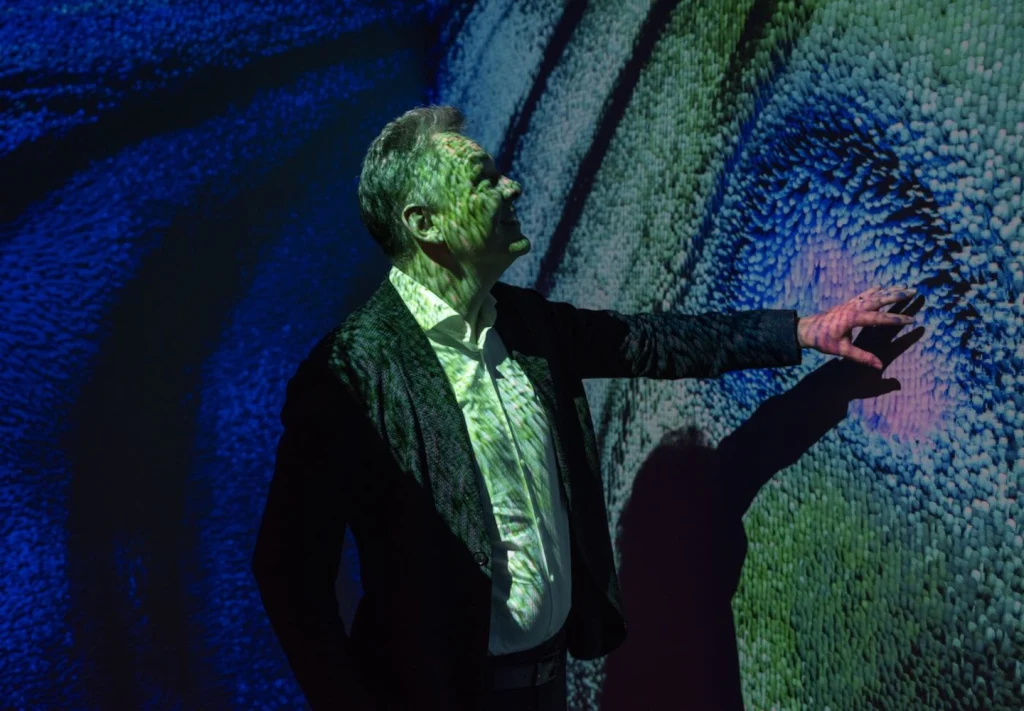
Hockney, of course, is the only live artist to have some say in the matter with the Lightroom installation in London’s Coal Drops Yard, perhaps more successful as a result – and for having his own commentary. However, here is not the place to fully explore the merits or otherwise of this alternative way of presenting old and new masters, or whether these enterprises are beneficial and educational, or downdumbing.
There is, though, an important distinction between what are digitised three-dimensional projections of original two-dimensional paintings, and light art that is created to be immersive and experiential – where the medium is the message. There is a possibility of muddying the waters between the gimmicky and the genuine artistic exploration of digital techniques – those artists using light, colour and reflectivity, plus a whole panoply of digital techniques, to create a unique, immersive, sometimes interactive experience.
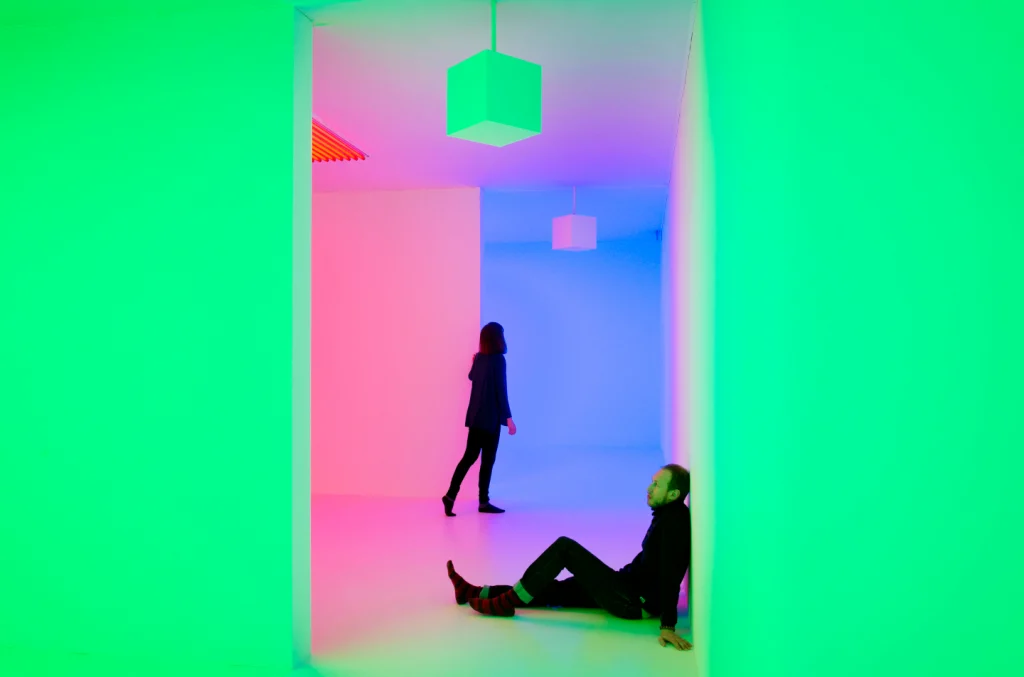
There is also non-digital art, which creates an immersive effect with the use of just light and reflectivity, with mirrors (Yayoi Kusama, overleaf) or the semi-translucency of water jets (Olafur Eliasson), or the emitted light and colour of the sources themselves (the 1960s/70s Light and Space movement, Carlos Cruz-Diez and his Chromosaturation series).
There are also multi-disciplinary companies that create installations for corporate environments, exhibitions and so on (Jason Bruges Studio and United Visual Artists, for example). Immersive-Me, which has a dazzling array of services from projection mapping to projection domes, offers to create ‘artistic light installations at festivals’. Dominic Harris, meanwhile, distinguishes between the installations he creates as an artist (he is represented by the Halcyon Gallery) and those carried out for clients through Cinimod, the company he founded in 2007.
So the ‘immersive experience’ is something of a catch-all, ranging from the cor blimey to the sublime, from the second rate to the spectacular.
At the cutting edge of the digital sphere is teamLab, which continues to bring art and technology together to create breathtaking installations in its home country and internationally. At the traditional end is the aforementioned Yayoi Kusama, whose new installation continues six decades of creating magical, immersive effects simply with light and mirrors.
TEAMLAB
Tokyo-based teamLab, founded in 2001, is at the forefront of the digital immersive field. An interdisciplinary creative group that brings together artists, programmers, engineers, computer graphics animators, mathematicians, architects, web and print graphic designers and editors, they refer to themselves as ‘ultra-technologists’ bringing together art, science, technology and creativity.

Its Planets exhibition in Tokyo has set the Guinness World Record for the world’s most visited museum dedicated to a single group or artist. Between 1 April 2023 and 31 March 2024, teamLab Planets welcomed more than 2.5 million visitors. This marks the second time a teamLab museum has set a Guinness World Record, following the 2019 record by teamLab’s Borderless, also in Tokyo. Last year, Borderless also opened as a permanent exhibition in Jeddah.
One of its most ambitious projects, scheduled for opening in 2025, is teamLab Phenomena Abu Dhabi – a 17,000m2 multisensory art experience featuring original and constantly transforming artistic installations unique to Abu Dhabi. It will sit alongside the Louvre Abu Dhabi and the Guggenheim in the Saadiyat Cultural District.
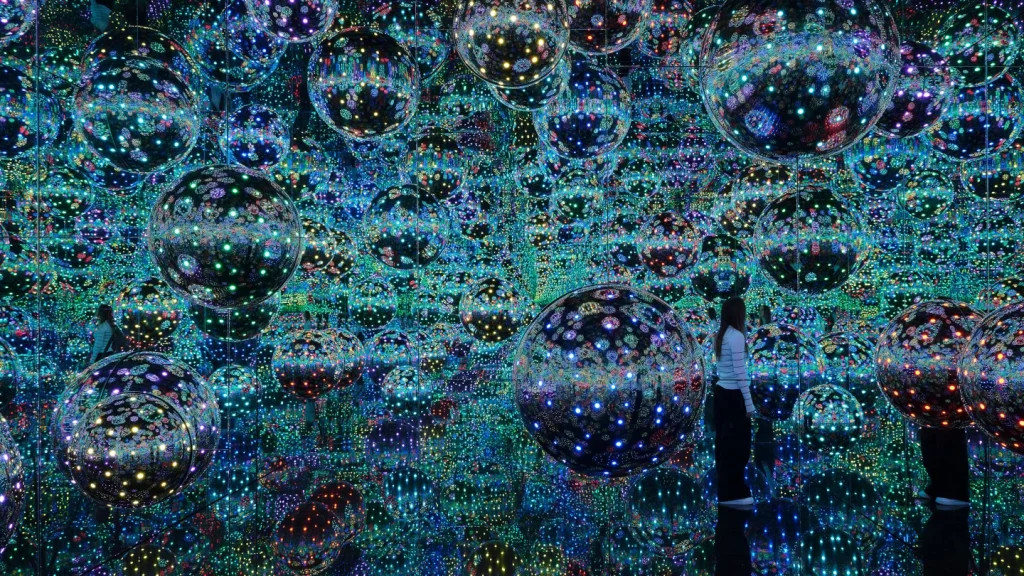
Writing for the Financial Times following a visit to Planets, Niki Blasina described teamLab’s work as ‘a delight, a mind-boggling and mesmerising marriage of visual and installation art with sensation — and a fascinating example of how technology can… influence our real-world experiences. It’s the art of tomorrow’. www.teamlab.art
MY HEART IS FILLED TO THE BRIM WITH SPARKLING LIGHT (2024)
YAYOI KUSAMA
Japanese artist Yayoi Kusama, renowned for her polka dots and pumpkins, is also known worldwide for her Infinity Mirror Rooms. She introduced her first mirrored environments in the 1960s, experimenting with light and reflection to dissolve spatial boundaries.
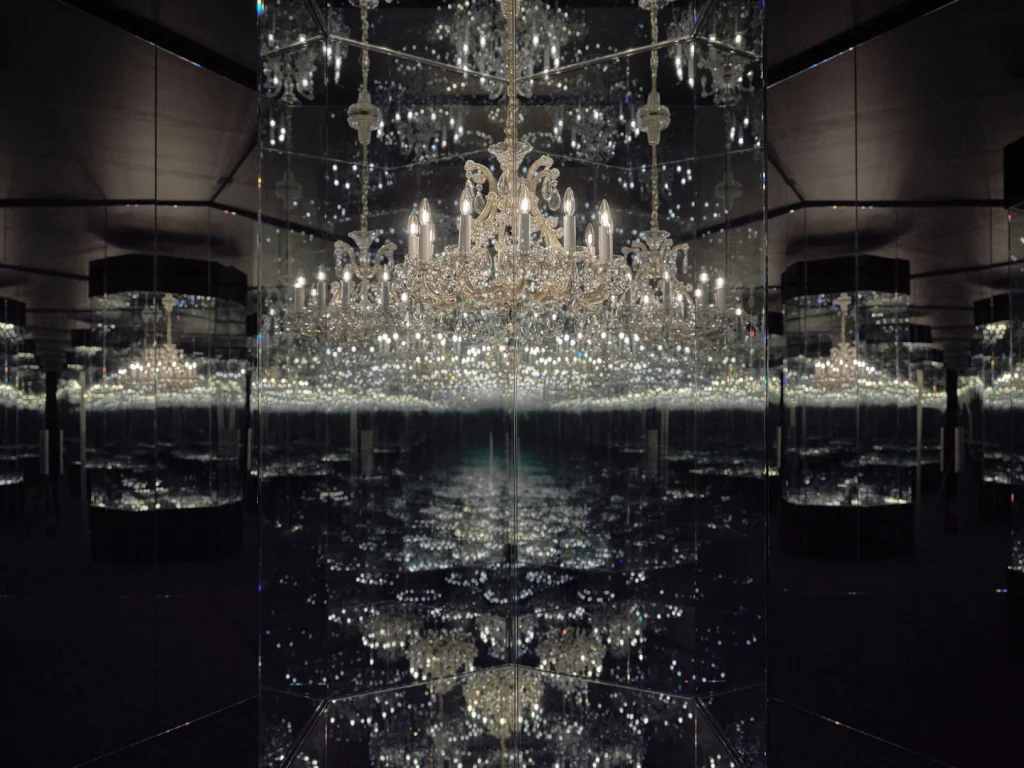
The National Gallery of Victoria (NGV) in Melbourne has unveiled a world-premiere infinity room as part of its major retrospective of the artist, which opened in December. Titled My Heart is Filled to the Brim with Sparkling Light (2024), Kusama invites the audience ‘to immerse themselves in an environment where light and reflection converge’. Points of light are orchestrated to generate a rhythmic interplay of brightness and shadow, encouraging viewers ‘to reflect on their place within an endless cosmos’.
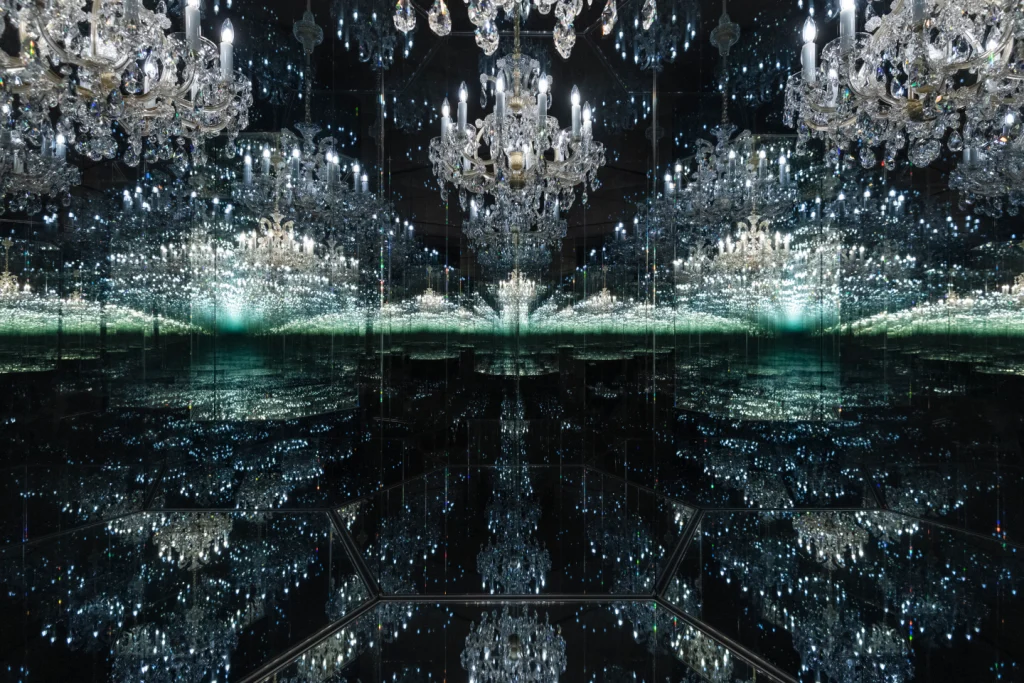
Infinity Mirrored Room – Filled with the Brilliance of Life was one of Kusama’s largest installations to date when it featured at her 2012 retrospective at Tate Modern. It was shown alongside Chandelier of Grief, a room that created the illusion of a boundless universe of rotating crystal chandeliers.
The newest installation is part of an exhibition that spans Kusama’s eight-decade career, showcasing 200 works, including ten immersive installations, including Dots Obsession, an installation of massive inflated spheres, featuring her trademark colourful, polka-dotted structures. www.ngv.vic.gov.au



